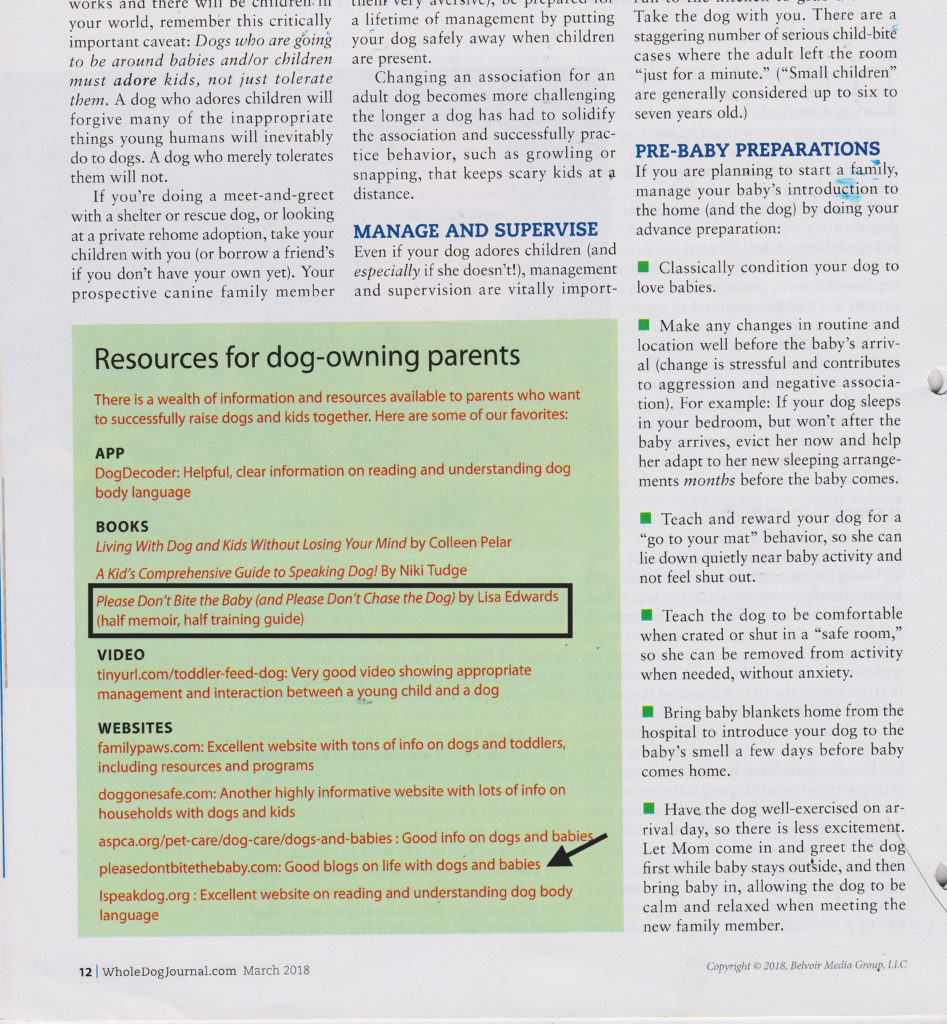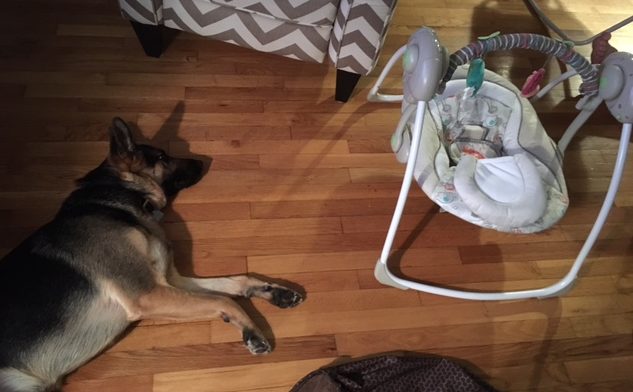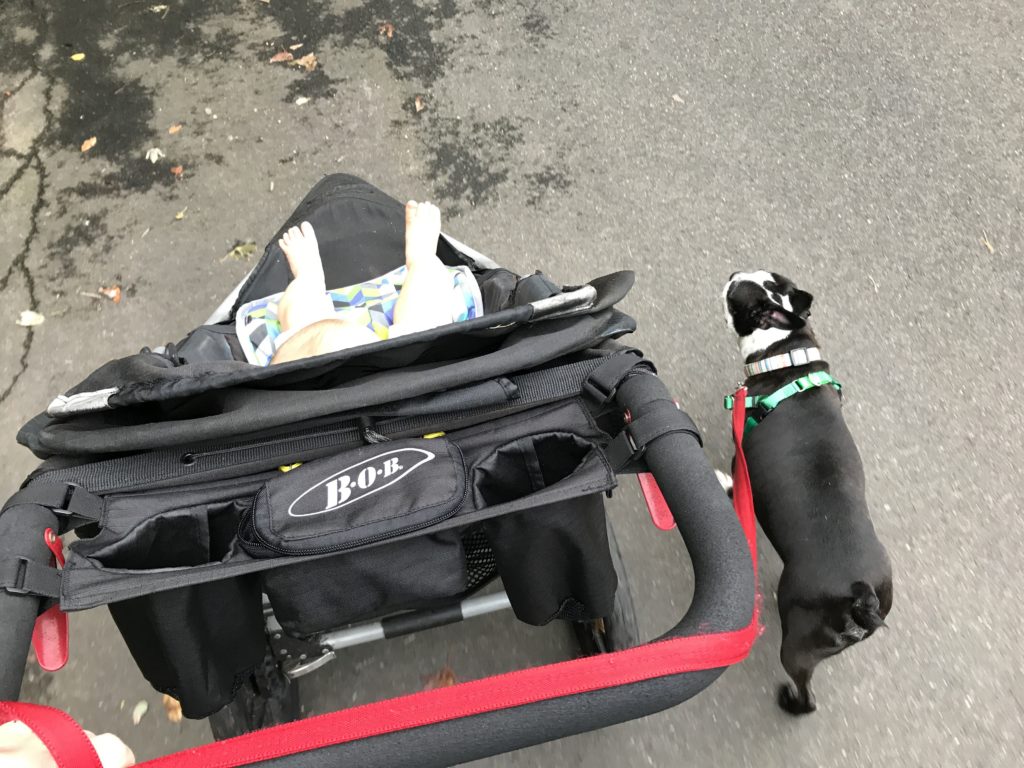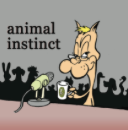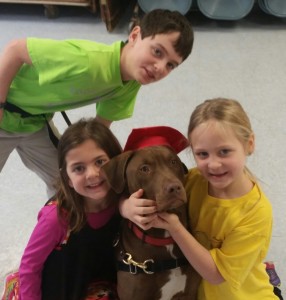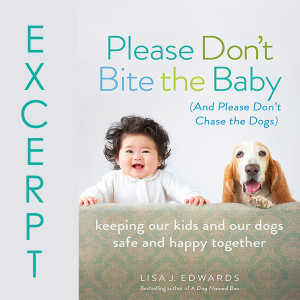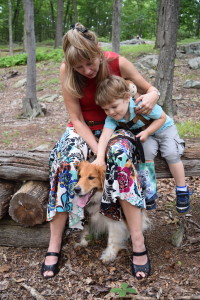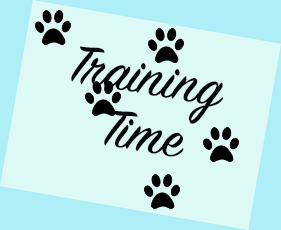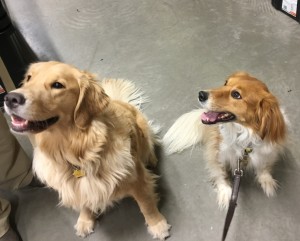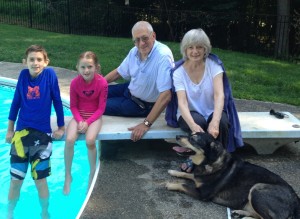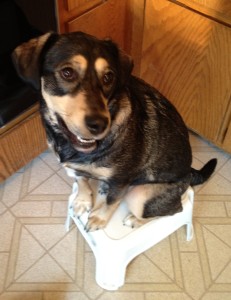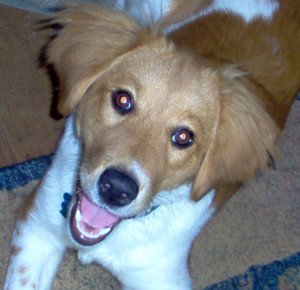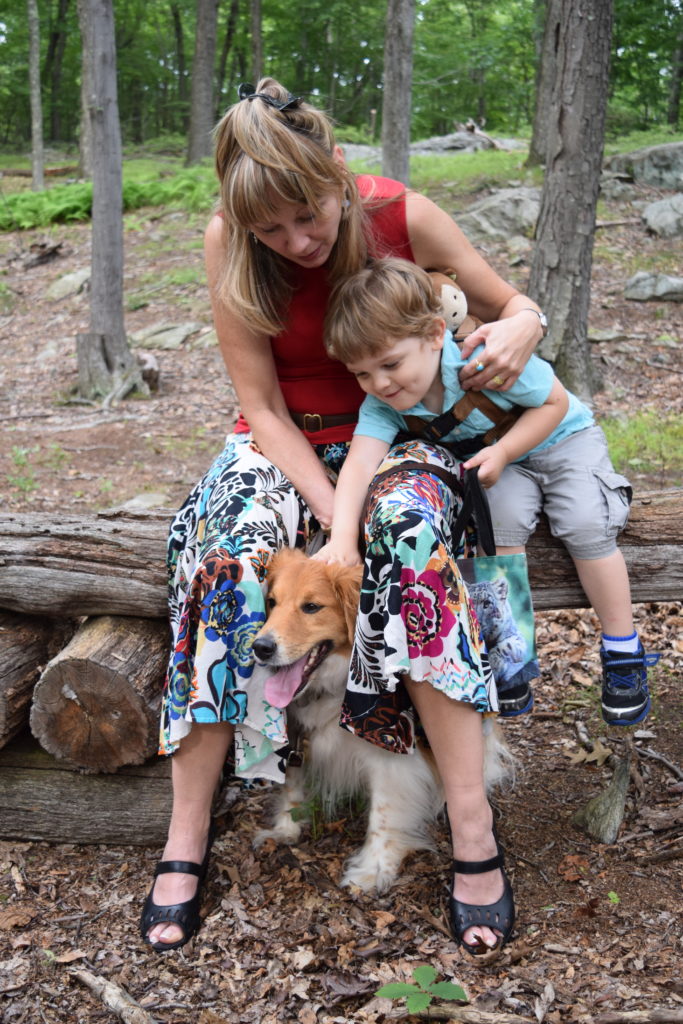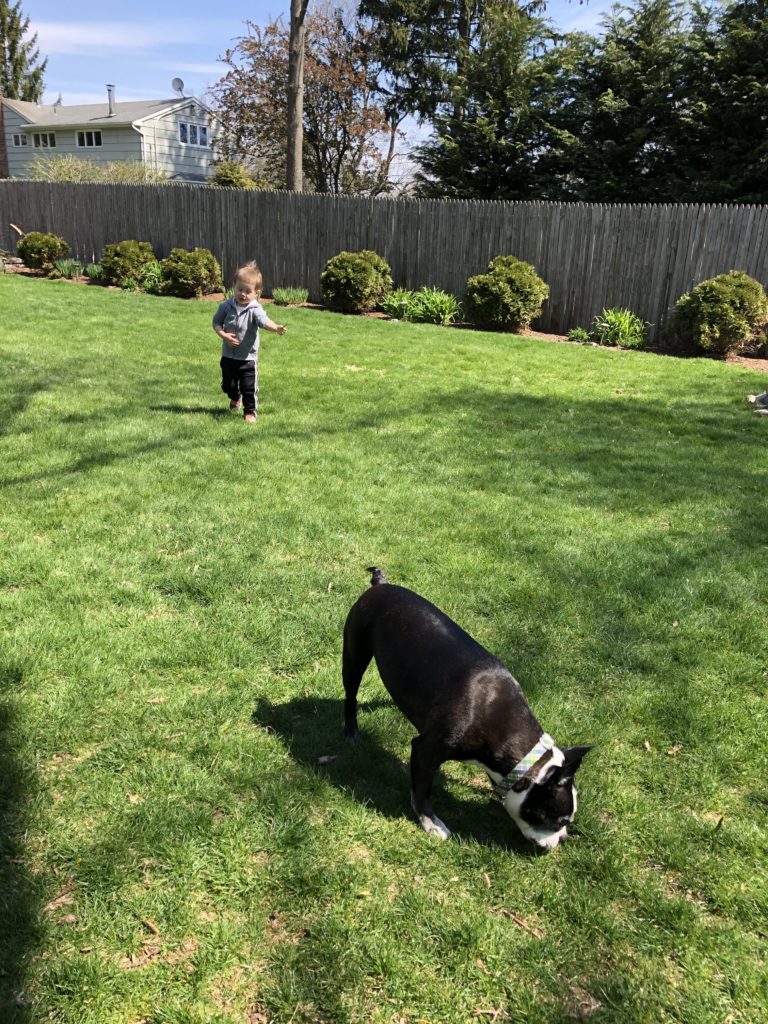Chapter 3 – Colic, Earaches, and Dogs—Oh My . . .
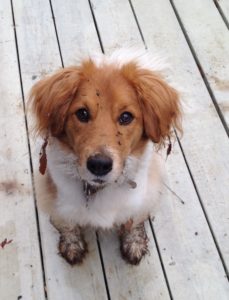
Pinball was the most put out by the new baby. He had been the baby before Indy arrived and at eighteen months, Pinball was in a critical behavioral/fear period. Wherever I was, Pinball wanted to be there, too, which often left him lying on the other side of a baby gate, watching us with a kind of hopefulness. Even though he was a fairly aggressive resource guarder, we had made great strides in counter-conditioning that behavior.
But when faced with the abundance of baby toys, he just couldn’t resist stealing them. We were left with the seemingly constant task of buying back stolen toys with a treat or different toy while carrying an infant on one hip. At the time, I wondered if his increased stealing was a grab for attention (good or bad, he didn’t care), but in hindsight I realized it was his way of dealing with increased anxiety that he was having a hard time processing.
Chapter 4 – Balancing— Pack and Sleep
- Sometimes leave it and drop it are enough, but in the case of a dog like Pinball it can require another couple of levels of training and management. Although his first bite at four months drew no blood, it still qualified as a level two bite on the Dunbar bite scale and identified Pinball as an extreme resource guarder.
Maintaining an attitude of “I don’t care; it’s all a game” is essential to overcoming this level of resource guarding.
- If your voice gets tense or you say, “What do you have?” or “Oh, no, not my expensive such-and-such” with stress or anger in your voice, extreme resource guarders dig in and either run with the object, swallow it, or hold their ground with full display of teeth, growling, and preemptive snapping. Maintaining an attitude of “I don’t care; it’s all a game” is essential to overcoming this level of resource guarding. One day, I saw Pinball with the pair of scissors in his mouth. “Oh, I hope you’re not planning to run like that,” I said in a happy tone, and then moved away from him to get my phone to take a picture. I then asked him to drop it, returning to him with the treats once he had dropped it. The picture taking is not necessary, but it was a great picture. If I had panicked, he might have bitten me, not dropped the scissors, or tried to swallow them. The “I don’t care” rule saved us both that day.
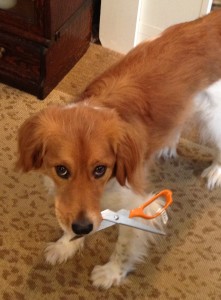
- When originally teaching Pinball to drop items, I was using the technique of tossing treats on the floor as I said drop it and then picking up the item once he went to get the treats. This has to be done with a happy tone and calm demeanor. Never race the dog to get to the object you want to recover; that could incite the dog to double back.
- For moderate guarders, I recommend building an easy tug game with well-defined boundaries and rules so your dog can learn that letting go of something can be a fun game.
Here are simple rules for the tug game:
- Start the game with a word like “tug” or “take it.”
- Keep even pressure on the tug toy so the dog can’t move up the toy with her mouth.
- If the dog uses you for leverage with her paws braced against you or her teeth hit you at any point, end the game by dropping the toy and walking away. Use only one or two toys to play this game—never use the leash or clothing.

